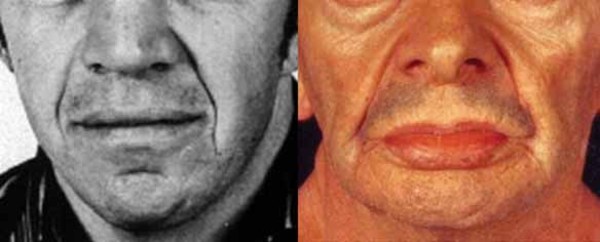

Low-set ears, high arched palate, micrognathia, midfacial hypoplasia, and downward displacement of the outer corner of the eyes and epicanthic folds create a characteristic facies. Body proportions are abnormal, with reduced height-to-width ratio, resulting in a stocky build and relatively large hands and feet.
#WEBBED NECK SYNDROME SKIN#
These include alopecia areata, cafe au lait macules, keloids, persistent lymphedema, premature skin aging, psoriasis, and vitiligo.Ī square-shaped chest with widely shaped nipples (“shield chest”) is frequently observed. Other associations have been reported but are of questionable increased frequency. Multiple melanocytic nevi on the face and scalp of a girl with Turner syndrome.Īltered dermatoglyphics occur in 40% of patients, likely secondary to fetal acral edema. Benign melanocytic nevi are found in increased numbers, although dysplastic nevi and melanomas do not seem to be more common (Figure 2). In addition to the aforementioned physical exam findings, Turner syndrome is associated with other dermatologic stigmata. Infants with TS are also at higher risk for congenital hip dislocation. The neck, as well as the fourth metacarpal or metatarsal, can be shortened. Madelung’s deformity, a malformation of the wrist, is reported to occur. In addition, developmental anomalies of other bones result in a variety of other recognizable features.Ĭubitus valgus, a deformity of the elbow in which the forearm deviates from the midline when extended, is an important clue to TS, especially when noted at birth. X-ray imaging may further reveal vertebral body wedging, cervical vertebrae hypoplasia, and coalition of vertebrae and hemivertebrae.Įstrogen deficiency secondary to gonadal dysgenesis predisposes patients to early-onset osteoporosis. Scoliosis and excessive kyphosis are found in 10% and 40% of patients, respectively. In addition, recurrent and severe bouts of otitis media are common and may progress to mastoiditis, cholesteatoma formation, and permanent hearing loss. Sensorineural hearing loss affects 50%-90% of patients. Additional sequelae of congenital lymphedema include a low posterior hairline and altered nail anatomy, including hypoplastic convex nails and uplited nailplates. Importantly, up to 30% of patients may nevertheless undergo some degree of pubertal growth and 2%-5% will have menses without medical intervention, although in 90% of patients gonadal failure eventually follows.Ĭongenital lymphedema is a common initial presentation of TS and its recognition may allow early diagnosis.Ĭystic hygromas may be detected by prenatal ultrasound, and resolution of the cystic hygroma by birth leads to a characteristic webbed neck appearance (pterygium colli) or redundant neck folds resembling cutis laxa.Īcral lymphedema is another important diagnostic clue and usually resolves by age 2 but may recur unilaterally or bilaterally in the legs at a later age.

Pubertal growth arrest results in absence of breast development and primary or secondary amenorrhea with high levels of follicle-stimulating hormone (FSH). Impaired sexual development and infertility are also common clinical features.

Any female patients with short stature less than the third percentile or below two standard deviations on the female growth curve should be referred for karyotyping if additional features of TS are present.


 0 kommentar(er)
0 kommentar(er)
